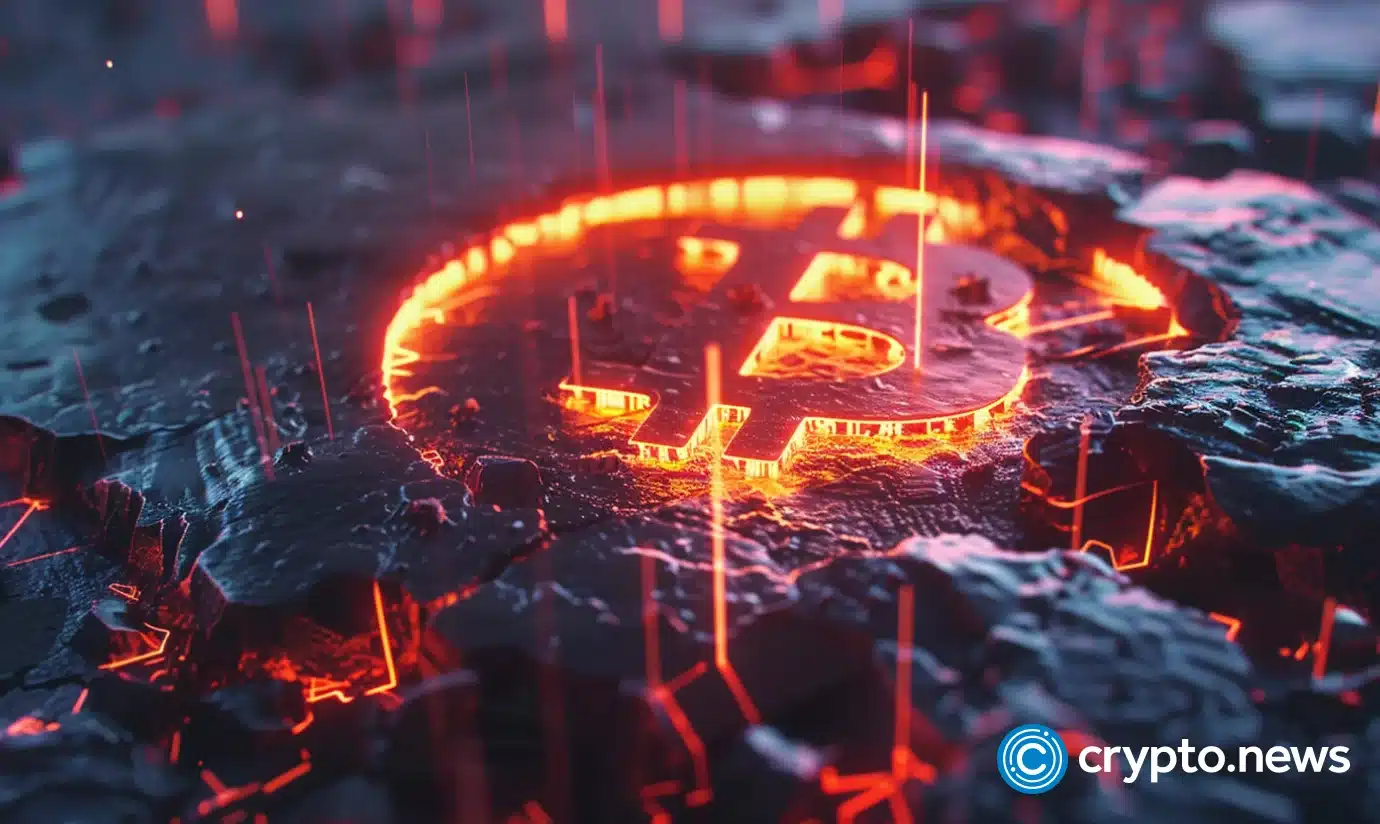
Speaking to crypto.news in an interview, Andy Fajar Hardika, CEO of Loka Mining, discussed the evolution of decentralized finance (DeFi) on the Bitcoin network.
Loka Mining 執行長 Andy Fajar Hardika 在接受 crypto.news 採訪時討論了比特幣網路上去中心化金融(DeFi)的演變。
On April 19, 2024, Bitcoin mining rewards were slashed in half. Mining a block will now generate only 3.125 BTC, compared to the previous 6.25 BTC. Although the Bitcoin halving happens every four years or so, this year, it's really got industry participants talking about how the reduced rewards will affect the mining economy.
2024 年 4 月 19 日,比特幣挖礦獎勵減半。開採一個區塊現在只產生 3.125 BTC,而之前為 6.25 BTC。儘管比特幣減半每四年左右發生一次,但今年,產業參與者確實開始討論獎勵減少將如何影響挖礦經濟。
With each halving event, mining firms have to adapt to a lower-margin environment. Cash-strapped firms usually exit the market or merge with bigger firms. Unlike the earlier halving events in 2016 and 2020, the 2024 halving event may result in a slew of consolidation and defaults.
每次減半事件,礦業公司都必須適應利潤率較低的環境。現金短缺的公司通常會退出市場或與更大的公司合併。與 2016 年和 2020 年的減半事件不同,2024 年的減半事件可能會導致大量整合和違約。
Enter Runes and Ordinals, concepts that are revolutionizing the DeFi landscape on the Bitcoin network.
符文和序數這些概念正在徹底改變比特幣網路上的 DeFi 格局。
Runes, like Ethereum's ERC-20 standard, introduce fungible tokens to the Bitcoin blockchain, while Ordinals bring NFTs directly onto the network. As the premiere cryptocurrency, this goes a long way in broadening the possibilities of what Bitcoin can offer beyond simple transactions.
Runes 與以太坊的 ERC-20 標準一樣,將可互換代幣引入比特幣區塊鏈,而 Ordinals 將 NFT 直接引入網路。作為首屈一指的加密貨幣,這在拓寬比特幣超越簡單交易的可能性方面大有幫助。
With Runes and Ordinals, Bitcoin is finding new ways to close the gap with Ethereum, which has largely been hailed as the king of DeFi. However, nothing is without its challenges. Scalability issues and concerns over blockchain bloat loom large, echoing past impediments in the industry.
透過符文和序數,比特幣正在尋找新的方法來縮小與以太坊的差距,而以太坊在很大程度上被譽為 DeFi 之王。然而,沒有什麼是沒有挑戰的。可擴展性問題和對區塊鏈膨脹的擔憂日益凸顯,這與該行業過去的障礙相呼應。
Still, the birth of protocols like Runes and Ordinals shows that Bitcoin can support more diverse decentralized applications. Miners, in return, are able to offset the halving's effect on revenue.
儘管如此,像 Runes 和 Ordinals 這樣的協議的誕生表明,比特幣可以支援更多樣化的去中心化應用。作為回報,礦工能夠抵銷減半對收入的影響。
Hardika, who leads a cryptocurrency mining firm, shared his insights on the matter.
領導一家加密貨幣挖礦公司的哈迪卡分享了他對此事的見解。
How do you perceive Bitcoin's evolving role in the DeFi space, given its recent advances like the Runes protocol and the impact it's had on miner revenues and transaction fees?
鑑於 Runes 協議等最新進展及其對礦工收入和交易費用的影響,您如何看待比特幣在 DeFi 領域不斷演變的角色?
Bitcoin lacks programmability but has the strongest Lindy effect and has proven to become the de facto store of value. I personally believe these characteristics are driving Bitcoin to be the "mother chain," attracting new protocols that are blooming on Bitcoin's L2 or sidechain.
比特幣缺乏可程式性,但具有最強的林迪效應,並已被證明成為事實上的價值儲存手段。我個人認為,這些特徵正在推動比特幣成為“母鏈”,吸引新協議在比特幣的 L2 或側鏈上蓬勃發展。
In your opinion, can Bitcoin position itself as a competitor to Ethereum in decentralized finance, or do you foresee a different outcome?
在您看來,比特幣能否將自己定位為去中心化金融領域以太坊的競爭對手,或者您是否預見到不同的結果?
I think what we will see in the end is not rivalry, but rather collaboration — where chains will be "fused" and abstracted away to a point that regular users don't really care or need to understand which chain they're currently using.
我認為我們最終看到的不是競爭,而是合作——鏈將被「融合」並抽像到普通用戶並不真正關心或需要了解他們目前正在使用哪條鏈的程度。
With Runes driving transaction fees to new heights, how do you think Bitcoin can balance rewarding miners with keeping transactions affordable and accessible? Are high fees hindering Bitcoin's adoption for smaller transactions?
隨著符文將交易費用推向新的高度,您認為比特幣如何在獎勵礦工與保持交易負擔得起且易於訪問之間取得平衡?高額費用是否阻礙了比特幣在小額交易中的採用?
As Bitcoin transitioned from a P2P e-cash system to a Store of Value, I believe the high transaction fee on Bitcoin L1 is important. It serves as a trade-off for the security budget the network needs to maintain. This is where L2s take part in scaling the network and adding programmability to Bitcoin. From a user's perspective, solutions like Lightning or ICP with their ckBTC enable Bitcoin transaction fees to be reduced to just a few cents.
隨著比特幣從 P2P 電子現金系統轉變為價值儲存系統,我認為比特幣 L1 的高交易費很重要。它是網路需要維護的安全預算的權衡。這就是 L2 參與擴展網路並為比特幣添加可編程性的地方。從用戶的角度來看,閃電網路或 ICP 等解決方案及其 ckBTC 可以將比特幣交易費用降低至幾美分。
Historically, Bitcoin has lagged behind Ethereum in DeFi applications. How likely is it that innovations like Runes and Ordinals will help Bitcoin close this gap? What are Bitcoin's advantages or challenges in this space?
從歷史上看,比特幣在 DeFi 應用程式方面一直落後於以太坊。像符文和序數這樣的創新有多大可能幫助比特幣縮小這一差距?比特幣在這個領域的優勢或挑戰是什麼?
Ordinals is basically fully on-chain NFT, parallel to ERC721, while Runes is essentially Fungible Tokens on Bitcoin, parallel to ERC-20. These are just early building blocks for Bitcoin programmability. While it's now possible to build an L1 primitive dApp, it's still very limited. I believe the actual use case would be like anchor points for the L2s to provide a full-blown DeFi app on Bitcoin. One significant advantage would be that we can unlock the massive Bitcoin TVL that is currently sitting in their holders' wallets.
Ordinals 基本上是完全鏈上的 NFT,與 ERC721 平行,而 Runes 本質上是比特幣上的同質代幣,與 ERC-20 平行。這些只是比特幣可編程性的早期構建塊。雖然現在可以建立 L1 原始 dApp,但它仍然非常有限。我相信實際的用例就像 L2 的錨點一樣,在比特幣上提供成熟的 DeFi 應用程式。一個顯著的優勢是我們可以解鎖目前持有者錢包中的大量比特幣 TVL。
Some critics argue that protocols like Runes and Ordinals could lead to blockchain bloat and slower transaction times. What are your thoughts on these drawbacks, and how do they compare to Ethereum's scalability challenges?
一些批評者認為,像符文和序號這樣的協議可能會導致區塊鏈膨脹和交易時間變慢。您對這些缺點有何看法?
History tends to repeat itself. A few years back, we had CryptoKitties, the first gamified NFT on the Ethereum network, consuming 13% of all transactions in the Ethereum network. This ignited the discussion about network scalability and eventually sparked many upgrades and the rise of L2s on Ethereum.
歷史往往會重演。幾年前,我們推出了 CryptoKitties,這是以太坊網路上第一個遊戲化的 NFT,消耗了以太坊網路中所有交易的 13%。這引發了有關網路可擴展性的討論,並最終引發了以太坊上的許多升級和 L2 的興起。
Do you expect a similar trend?
您預計會出現類似的趨勢嗎?
I believe we see parallels between Runes and Ordinals, which are now taking significant block space and contributing a significant amount to the network's security budget. As an indirect result, there are now more than 50 Bitcoin Layers or sidechains trying to solve Bitcoin's scalability. And of course, just like startups, most of them will eventually die down or become dormant — but those with strong utility and actual use cases will survive.
我相信我們看到了 Runes 和 Ordinals 之間的相似之處,它們現在佔用了大量的區塊空間,並為網路的安全預算做出了很大的貢獻。間接結果,現在有超過 50 個比特幣層或側鏈試圖解決比特幣的可擴展性。當然,就像新創公司一樣,大多數公司最終都會消亡或休眠——但那些具有強大實用性和實際用例的公司將會生存下來。


 Crypto Daily™
Crypto Daily™ DogeHome
DogeHome ETHNews
ETHNews Crypto Daily™
Crypto Daily™ crypto.ro English
crypto.ro English Thecoinrepublic.com
Thecoinrepublic.com Crypto Daily™
Crypto Daily™ U.Today
U.Today






















